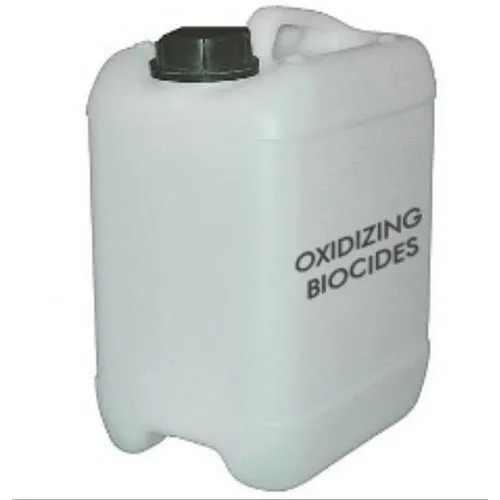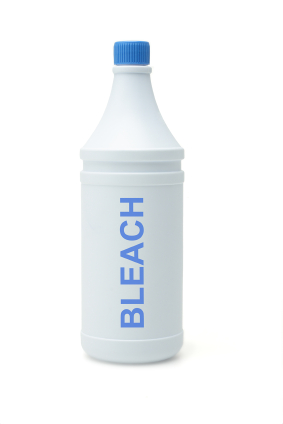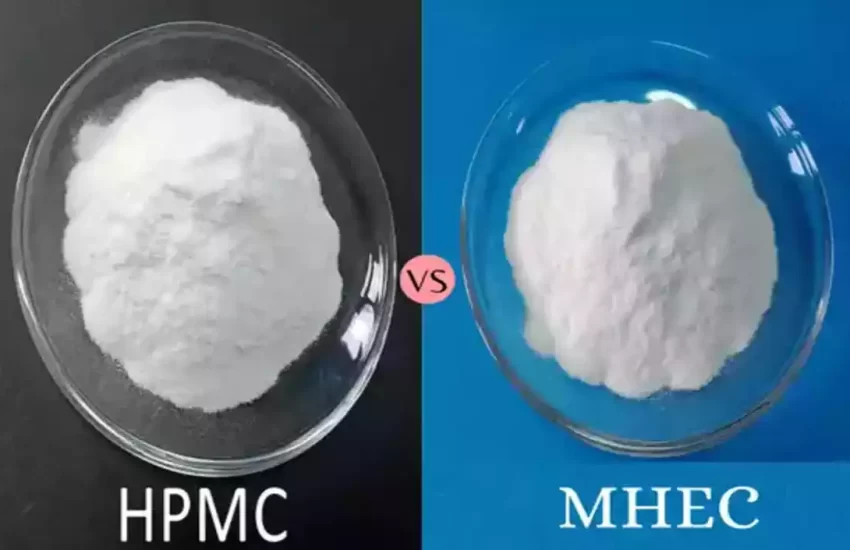Difference Between Oxidizing and Non-oxidizing Biocides
Oxidizing vs Non-oxidizing Biocides
Oxidizing and Non-oxidizing Biocides are two distinct categories of antimicrobial agents used for disinfection and microbial control. Oxidizing biocides such as chlorine and bromine compounds work by initiating oxidation-reduction reactions which produce free radicals or reactive oxygen species, damaging microbial cells. Oxidizing biocides are effective against a wide variety of microorganisms but may produce harmful byproducts and have limited residual activity.
Non-oxidizing biocides, including quaternary ammonium compounds and biguanides, work differently they disrupt essential cellular processes or enzymes within microorganisms to stop them from growing and surviving. Target-specific biocides offer targeted action with a lower potential for harmful byproducts, making them popular choices in medical settings and industrial preservation.
When selecting an effective and responsible biocide for use, considerations such as application context, microbial diversity, and regulatory considerations should all be taken into account so as to achieve effective and responsible microbial control.
What is Oxidizing Biocides
Oxidizing biocides are chemical agents widely employed for disinfection and microbial control purposes. Their principle function involves initiating oxidation-reduction reactions which produce reactive oxygen species (ROS), or free radicals. Once released into the environment, ROS interact with microbe cell components like proteins, lipids, or nucleic acids and cause damage that ultimately inactivates or kills these microorganisms so they no longer reproduce or cause infections.

Compounds that use chlorine- and bromine-based elements (like chlorine gas and sodium hypochlorite ), as well as bromine compounds, are among the many examples of oxidizing biocides, making extensive use in various fields including water treatment, swimming pool maintenance, and food processing applications. Their broad spectrum efficacy makes these antimicrobials suitable against various pathogens including bacteria viruses fungi.
Though oxidizing biocides can be effective at suppressing microbial populations, they do have potential drawbacks that should be kept in mind. Their use could result in harmful disinfection byproducts that pose risks to both people and the environment alike.
Many display limited residual activity after application; therefore proper handling, dosage control, and consideration of specific context are key for maximization benefits while minimizing potential drawbacks of using such biocides.
Classification of Oxidizing biocides
- Chlorine Compounds: Chlorine-based biocides include: Chlorine gas (Cl2), sodium hypochlorite (NaClO), and calcium hypochlorite (Ca(ClO)2) are among the many chlorine compounds.
- Bromine-based biocides include: Bromine gas (Br2), sodium bromide (NaBr), and hydrobromic acid are commonly used as brominating agents to disinfect water sources and treat their environment. Ozone (O3) can also be utilized as an effective water disinfection agent and treatment biocide, providing disinfection at both treatment plants and public water systems.
- Peracetic Acid: Peracetic acid (PAA) is an extremely versatile oxidizer with many applications in various fields of business and industry.
- Potassium Permanganate: Used as an oxidizing biocide in water treatment and fish farming applications.
- Hydrogen Peroxide: Although hydrogen peroxide (H2O2) may not technically fall under the category of an oxidizing biocide, higher concentrations may still act as an effective oxidizer.
What is Non-oxidizing Biocides
Non-oxidizing biocides are chemical agents commonly employed for controlling microbial growth and disinfection purposes in various settings. As opposed to their counterpart, which relies on oxidation-reduction reactions, non-oxidizing biocides target specific microorganisms using different mechanisms that interfere with essential cellular processes or enzymes that aid their survival and reproduction.
Common non-oxidizing biocides include quaternary ammonium compounds (quats) and biguanides. Quats target cell membranes and proteins to render microbes harmless while biguanides such as polyhexamethylene biguanide interfere with their enzymes to prevent their functioning and thus inactivation.

Non-oxidizing biocides have several distinct advantages over their oxidizing counterparts, including target-specific action and lower potential to produce harmful byproducts than their oxidized counterparts. They’re commonly utilized both within healthcare environments (where controlling infection spread is essential), as well as industrial settings to protect products against contamination by microbes.
Non-oxidizing biocides do have certain limitations that must be considered when choosing one based on your application and microbe challenges. Including reduced efficacy against certain microorganisms or specific strains that have developed resistance mechanisms and limited coverage by non-oxidizing biocide activity compared with its oxidizing counterparts.
To maximize effectiveness against emerging resistance patterns when selecting non-oxidizing biocides for effective microbial control it’s critical that responsible use, potential ecological impact assessment, and keeping informed are taken into consideration.
Before choosing which biocide you choose for effective microbial control with non-oxidizing biocide usage for effective microbial control using non-oxidizing biocide non-oxidizing biocide for best performance results compared with their oxidizing counterparts. when employing non-oxidizing biocides for successful antimicrobial control of non-oxidizing biocide users.
When opting for non-oxidizing ones when selecting non-oxidizing ones to used successfully against specific strains with resistance mechanisms developed over time when selecting which product from among several is suitable when choosing non-oxidizing biocide options is selected and according to a specific application, microbial challenger a suitable biocide(s).
It’s essential when employing non-oxidizing biocide use while staying current on resistance patterns when choosing non-oxidizing biocide for effective microbial control purposes utilizing non-oxidizing biocide.
Classification of Non-Oxidizing Biocides
Quaternary Ammonium Compounds (Quats): Used to disrupt cell membranes and proteins for cleaning and disinfection products.
- Biguanides: Used in healthcare and industrial environments to suppress microbial enzymes and cell processes that interfere with immunity systems and cell processes, Biguanides have proven themselves successful at disrupting them.
- Isothiazolinones: These chemicals work by interfering with microbial metabolism and enzyme activity; used extensively in water treatment as well as industrial applications.
- Phenolic Compounds: Used in household disinfectants and industrial cleaners to disrupt membranes and enzymes, these compounds disrupt membranes and enzymes found in biological cells to produce harmful by-products that harm their users.
- Aldehydes: Used for medical equipment sterilization. Aldehydes crosslink proteins to inhibit their replication, providing effective sterilization.
- Silver Compounds: When combined with silver-ion releasers such as wound dressings or medical devices, these compounds release silver ions to interfere with microbial metabolism and inhibit their activity.
- Chlorhexidine: Widely used for skin disinfection purposes in healthcare facilities to disrupt cell membranes and proteins that protect skin cells from infections, chlorhexidine is widely employed as an effective skin sanitizer.
- Thiocyanates: Used in industrial water treatment to suppress microbial enzymes and metabolism processes.
- Ethylene Oxide: Gaseous biocide used for medical device sterilization that disrupts cell structures and enzymes to disinfect medical equipment.
The Science Behind How Oxidizing and Non-oxidizing Biocides Kill Bacteria and Viruses
Oxidizing Biocides: Oxidizing biocides work by initiating oxidation-reduction reactions known as redox reactions, producing reactive oxygen species (ROS) or free radicals which contain oxygen molecules that react strongly with biological cells, damaging essential components such as proteins, lipids, and nucleic acids before leading to their inactivation or death.
Non-Oxidizing Biocides: Non-oxidizing biocides work against microbes through various mechanisms. One approach involves disrupting cell membranes to cause leakage of cell contents and loss of integrity; some biocides like quaternary ammonium compounds (quats) also bind directly to their target membrane, altering both the structure and function of cells infected.
Another approach involves interfering with crucial enzymes and processes essential to the survival and reproduction of bacteria. Biguanides, for instance, disrupt the functioning of vital microbial enzymes to impede their survival and reproduction.
Key differences between oxidizing and non-oxidizing biocides
Here’s a simplified comparison chart between oxidizing and non-oxidizing biocides:
| Aspect | Oxidizing Biocides | Non-Oxidizing Biocides |
|---|---|---|
| Mechanism of Action | Initiate oxidation-reduction reactions | Interfere with cellular processes |
| Reactive Species | Generate ROS or free radicals | Disrupt cell membranes/enzymes |
| Spectrum of Activity | Broad-spectrum (bacteria, viruses, fungi) | Target-specific (varies by type) |
| Residual Activity | Limited residual effects | Varies, generally moderate to good |
| Byproduct Formation | Potential for harmful byproducts | Lower potential for harmful byproducts |
| Environmental Impact | May lead to disinfection byproducts | Generally lower impact on the environment |
| Efficacy Against | Effective against diverse microorganisms | Effective against specific targets |
| Applications | Water treatment, pools, spas | Healthcare, industrial preservation |
| Resistance Development | Less prone to microbial resistance | Possible development of resistance |
| Selection Considerations | Application context, microbial load | Application context, target specificity |
Pros and Cons of Oxidizing and Non-oxidizing Solutions
Pros and Cons of Oxidizing Biocides
Pros
- Oxidizing Biocides Offer Many Advantages: For one thing, their broad-spectrum effectiveness makes oxidizing biocides ideal for combatting various microorganisms ranging from bacteria, viruses, fungi, and algae to rapid action when dealing with immediate disinfection needs. They have proven particularly successful at eliminating harmful pathogens.
- Short Contact Time: In many instances, oxidation reactions lead to quick microbial kill rates, cutting the time spent disinfecting significantly.
- Residual Disinfection: Certain oxidizing biocides leave behind residual disinfectant in treated water to ensure long-term control over time.
Cons:
- By-product formation: Oxidation reactions may produce disinfection byproducts which could potentially be hazardous to human health and the environment.
- Toxicity Issues: Some oxidizing biocides such as chlorine compounds may pose potential hazards when not handled appropriately and could potentially lead to respiratory or skin irritation.
- Limited Residual Activity: While some oxidizing biocides provide residual disinfection, this effect tends to be shorter-lived compared to non-oxidizing alternatives.
- Corrosive: Some oxidizing biocides can be harmful for materials and can even corrode them over time, creating issues in some applications. Non-Oxidizing Biocides:
Pros and Cons of Non-oxidizing Biocides
Pros:
- Targeted Action: Non-oxidizing biocides provide targeted microbial control by targeting only specific organisms while having less of an impactful impact on non-target organisms.
- Lower Byproduct Formation: These biocides typically generate less harmful byproducts compared to their oxidizing counterparts.
- Safety Profile: Non-oxidizing biocides tend to be safer to handle and have less potential to cause irritation or harm to humans.
- Ecological Impact: Non-oxidizing biocides have less of an environmental impact due to less production of harmful byproducts.
Cons:
- Specificity: Non-oxidizing biocides have a more targeted approach, making them effective against specific microorganisms but potentially limited by their narrow spectrum of activity. Over time, resistant mechanisms may develop against specific non-oxidizing biocides.
- Slower Action: Non-oxidizing biocides often require longer contact times to achieve effective disinfection compared to their oxidizing solutions, and may have limited residual activity, necessitating more frequent applications for some cases.
Environmental Impact of Oxidizing and Non-oxidizing Biocides
The impact on the environment of non-oxidizing as well as oxidizing biocides is a major factor in the selection of their use. Biocides that oxidize, though efficient in controlling the population of microbial species, can also have significant negative environmental impact. The use of biocides that oxidize like chlorine-based compounds could lead to the creation of DBPs from disinfection (DBPs) as they react with organic matter present in the water.
Certain DBPs can be hazardous for human health as well as the ecosystems of aquatic life, causing worries about the water’s quality as well as disturbances to ecosystems. Incorrect treatment or disposal of oxidizing biocides could result in environmental contamination as well as detrimental effects to non-target organisms.
The non-oxidizing biocides are less likely to cause damaging byproducts to form. This can be particularly beneficial for situations in which environmental impacts are a main aspect. Biocides typically break down into less toxic compounds in time, which reduces their impact on the surroundings. Biocides that are not oxidizing also have less chance of causing antimicrobial resistance than their counterparts that are oxidizing.
But, it’s crucial to keep in mind that non-oxidizing chemicals do not completely abstain from environmental impacts. Certain non-oxidizing biocides may accumulate within aquatic ecosystems and can have an impact on aquatic life for a long time which could alter ecosystems and food chains. This is why it’s important to take an attentive analysis of the biocide’s nature as well as concentration and techniques to limit the potential environmental harm.
Future Trends and Innovations
- Green and Sustainable Solutions: With environmental responsibility gaining prominence, biodegradable, eco-friendly, non-toxic biocides are increasingly making an appearance on store shelves. New innovations will focus on minimizing their environmental footprint while still providing effective microbial control.
- Nanotechnology: Nano-sized materials and nanoparticles offer great potential for improving biocide delivery and targeted action, potentially leading to both enhanced efficacy and decreased usage of biocides.
- Antimicrobial Surfaces: Thanks to advances in material science, advanced surfaces will soon have inherent antimicrobial properties which could reduce the need for continuous biocide use in environments like hospitals and public spaces.
- Intelligent Delivery Systems: Integrating sensors and technology into biocide delivery systems could enable real-time monitoring and adaptive dosing for optimized effectiveness and reduced overuse.
- Combinations of Biocides: By combining multiple biocides or combinations that include other technologies like UV treatment, like multi-agent biocides or multiple agents combined together can provide comprehensive microbial control with less dependence on any one agent.
- Precision Microbial Control: Recent advances in genetic and microbial analysis could enable more targeted control strategies that target pathogenic strains or populations without negatively affecting beneficial microbes.
- Biofilm Disruption: Biocides that effectively penetrate and disrupt biofilms – complex microbial communities with increased resistance – will become crucial tools in industries like healthcare and water treatment.
- Regulatory Progress: Stricter regulations and standards may prompt the creation of safer, more effective biocides that provide increased consumer and environmental protection.
- Antimicrobial Resistance Management: Establishing biocides that have reduced potential for resistance development as well as strategies for effectively controlling it will be key components in maintaining effective microbial control.
- Customized Hygiene Solutions: Customizable biocides tailored specifically for individual microbial profiles could represent an innovative method of personal hygiene and disinfection.
Conclusion
Oxidizing and non-oxidizing biocides play an essential role in disinfection, yet differ significantly in terms of their mechanisms and impacts. Oxidizing biocides such as chlorine and bromine release reactive oxygen species that effectively control many microorganisms. They can generate byproducts with potential health and environmental risks.
Non-oxidizing biocides like quaternary ammonium compounds or biguanides offer lower byproduct formation with reduced environmental impacts. Oxidizing biocides act quickly but with limited residual effect.
Non-oxidizing biocides offer targeted action and reduced resistance development; selecting between them depends on factors like application, efficacy, safety and environmental concerns. Both play an essential role; in maximizing their use safely while minimizing negative consequences to health and the environment.


